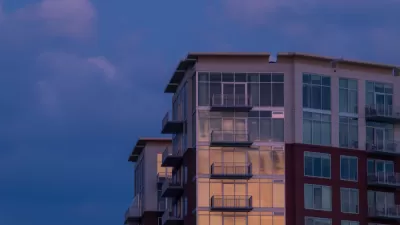Advocates and political supporters are calling HB 1607 an incremental, first step, after the process of building a winning political coalition cut back some of the original ambition of the statewide zoning reform effort.

The Connecticut State Senate voted, 23-13, to approve HB 6107. The May 27 vote followed a week after approval by the state House of Representatives, which voted 84 – 59. The bill is now heading to Governor Ned Lamont, where it is expected to be signed.
An article by Jacqueline Rabe Thomas summarizes the zoning reforms included the bill:
The legislation would require towns to allow single-family homeowners to convert parts of their dwellings or detached garages into so-called accessory dwelling units, nicknamed “granny pods,” without needing special permission from local officials — but it allows towns to vote to opt out. The bill places limits on how many parking spaces a new home or apartment must have — but also allows towns to vote to opt out.
The article also summarizes "huge concessions" from the original legislation:
Language was scrapped that would have required towns to allow the construction of multi-unit housing around some train stations and suburban towns’ commercial centers, as well as language that would have specified to each town how many affordable units they must allow — but would leave it up to them and a monitor to ensure it happens.
Planetizen Editor Diana Ionescu reported on the details and ambitions of the state's efforts to preempt local zoning codes back in March. An article by Cate Hewitt from April documented the bill's evolution and progress as it made its way through the state's General Assembly.
Sara Bronin, one of the founders of Desegregate CT, the advocacy organization that crafted the legislation after raising attention about the dominance of single-family residential zones in the state, also took to Twitter to provide an explanation of the bill in its final form, in addition to addressing the "more incremental" accomplishments of the bill in its final form. Bronin also argues that those incremental achievements—like legalized accessory dwelling units, reduced parking minimum, a model form-based code, a complete streets code, a ban an source of income discrimination, and an end to multi-family housing caps, among others—are significant.

Maui's Vacation Rental Debate Turns Ugly
Verbal attacks, misinformation campaigns and fistfights plague a high-stakes debate to convert thousands of vacation rentals into long-term housing.

Planetizen Federal Action Tracker
A weekly monitor of how Trump’s orders and actions are impacting planners and planning in America.

In Urban Planning, AI Prompting Could be the New Design Thinking
Creativity has long been key to great urban design. What if we see AI as our new creative partner?

How Trump's HUD Budget Proposal Would Harm Homelessness Response
Experts say the change to the HUD budget would make it more difficult to identify people who are homeless and connect them with services, and to prevent homelessness.

The Vast Potential of the Right-of-Way
One writer argues that the space between two building faces is the most important element of the built environment.

Florida Seniors Face Rising Homelessness Risk
High housing costs are pushing more seniors, many of them on a fixed income, into homelessness.
Urban Design for Planners 1: Software Tools
This six-course series explores essential urban design concepts using open source software and equips planners with the tools they need to participate fully in the urban design process.
Planning for Universal Design
Learn the tools for implementing Universal Design in planning regulations.
Gallatin County Department of Planning & Community Development
Heyer Gruel & Associates PA
JM Goldson LLC
City of Camden Redevelopment Agency
City of Astoria
Transportation Research & Education Center (TREC) at Portland State University
Jefferson Parish Government
Camden Redevelopment Agency
City of Claremont





























